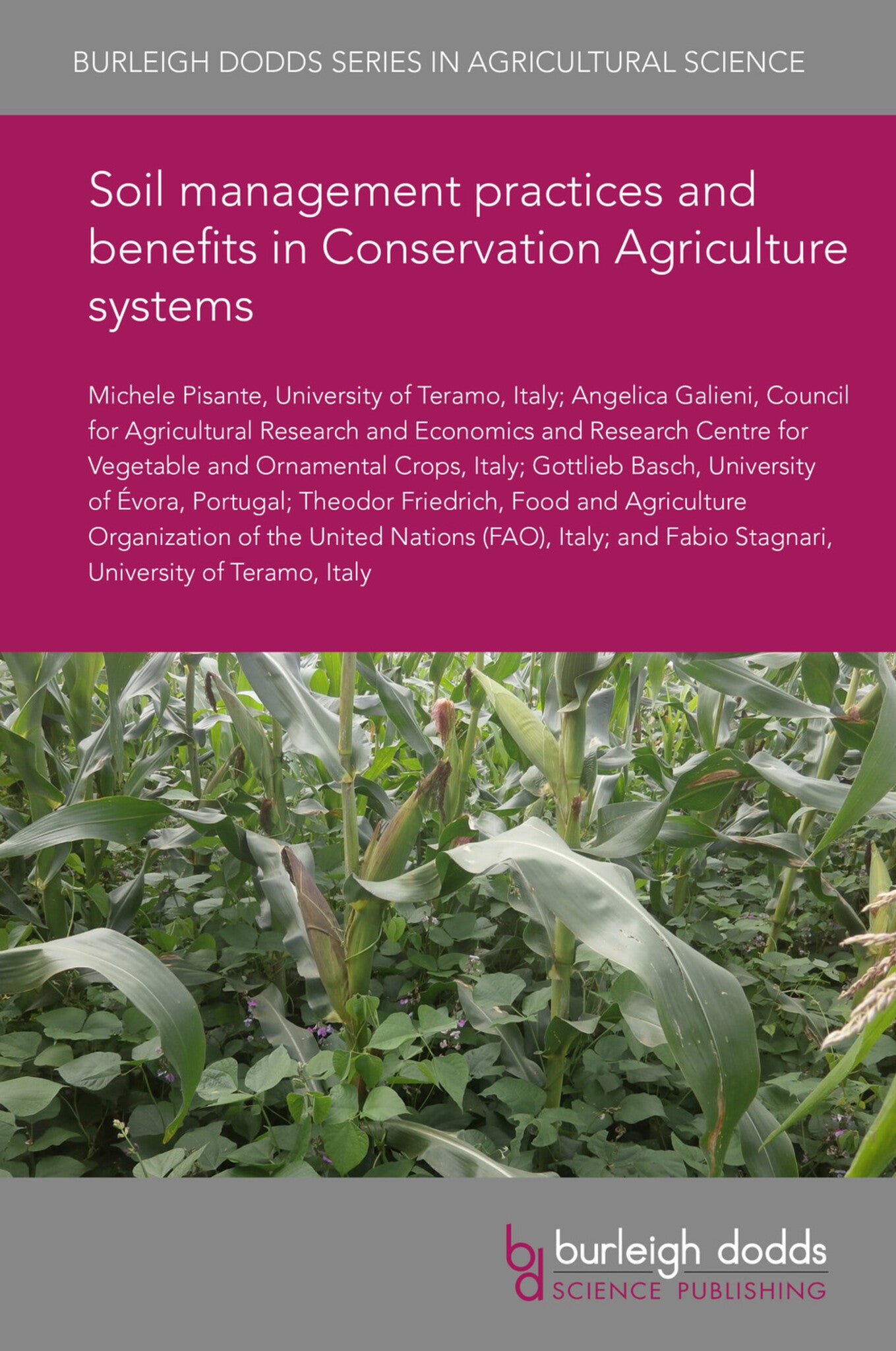We're sorry. An error has occurred
Please cancel or retry.
Soil management practices and benefits in Conservation Agriculture systems
Prof michele pisante,
Dr angelica galieni,
Professor gottlieb basch,
Dr theodor friedrich,
Dr fabio stagnari
Regular price
£25.00
Sale price
£25.00
Regular price
£0.00
Unit price
/
per
Sale
Sold out
Re-stocking soon
Conservation Agriculture (CA) is known to deliver ecosystem services, maintain the soil potential productivity and improve the resource-use efficiency as well as the natural resources. It adapts to...
Read More

Some error occured while loading the Quick View. Please close the Quick View and try reloading the page.
Couldn't load pickup availability
- Format:
-
20 January 2020

Conservation Agriculture (CA) is known to deliver ecosystem services, maintain the soil potential productivity and improve the resource-use efficiency as well as the natural resources. It adapts to and mitigates climate change and leads to a more efficient use of inputs hence reducing production costs. This chapter describes the principles of Conservation Agriculture, including soil management. The chapter examines the concepts of no-tillage agriculture, cover crops and crop residues management. The chapter also discusses the environmental benefits and ecosystem services linked to CA as well as economic benefits. Finally, the chapter looks ahead to future research trends in this area.

Price: £25.00
Publisher: Burleigh Dodds Science Publishing
Imprint: Burleigh Dodds Science Publishing
Series: Burleigh Dodds Series in Agricultural Science
Publication Date:
20 January 2020
ISBN: 9781786765871
Format: eBook
BISACs:
TECHNOLOGY & ENGINEERING / Agriculture / Sustainable Agriculture, Agronomy and crop production, TECHNOLOGY & ENGINEERING / Agriculture / Agronomy / Crop Science, TECHNOLOGY & ENGINEERING / Agriculture / Organic, Sustainable agriculture, Organic farming

- 1 Introduction
- 2 The principles of CA
- 3 Environmental benefits and ecosystem services
- 4 Economic benefits
- 5 Future trends
- 6 Conclusion
- 7 Where to look for further information
- 8 References



